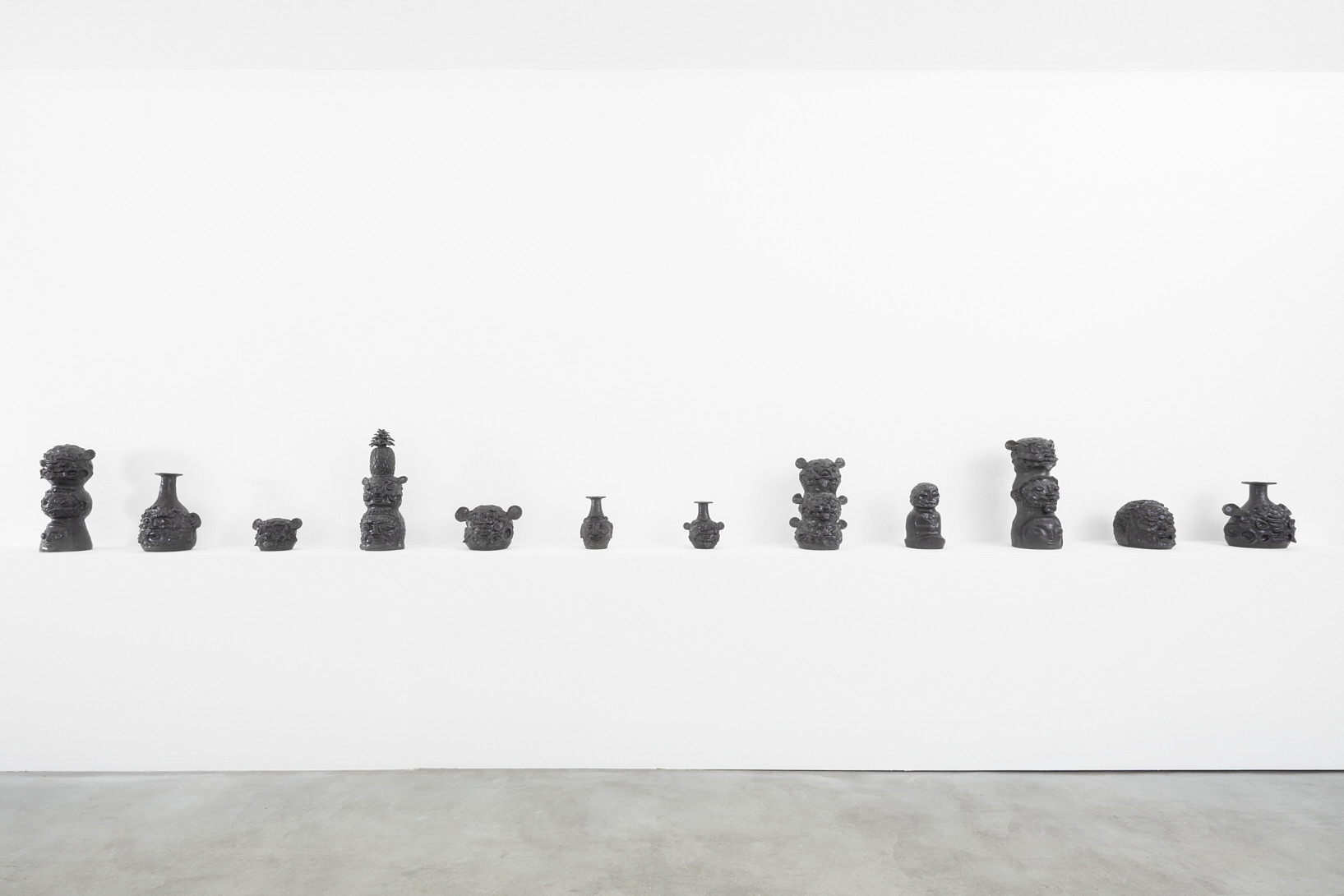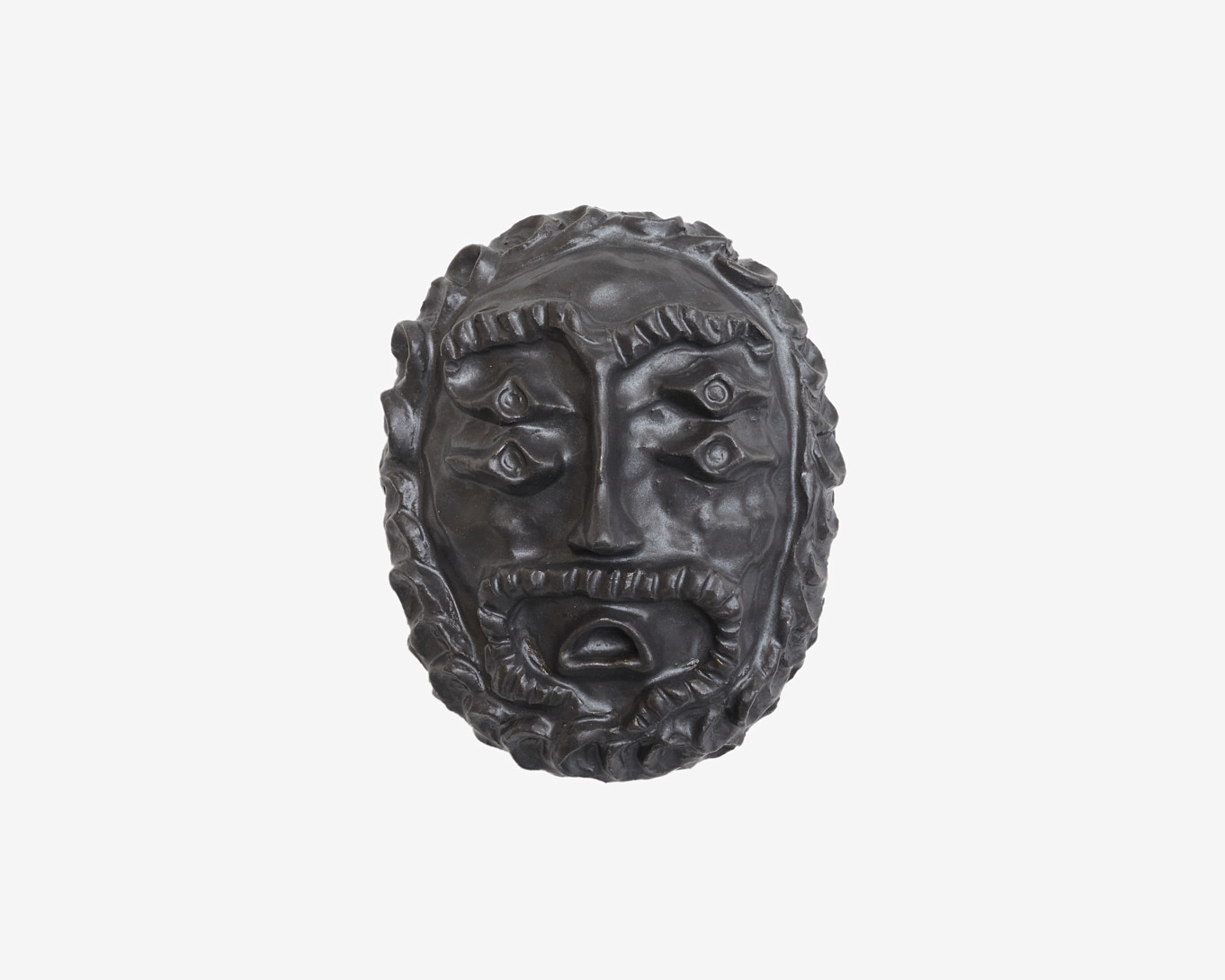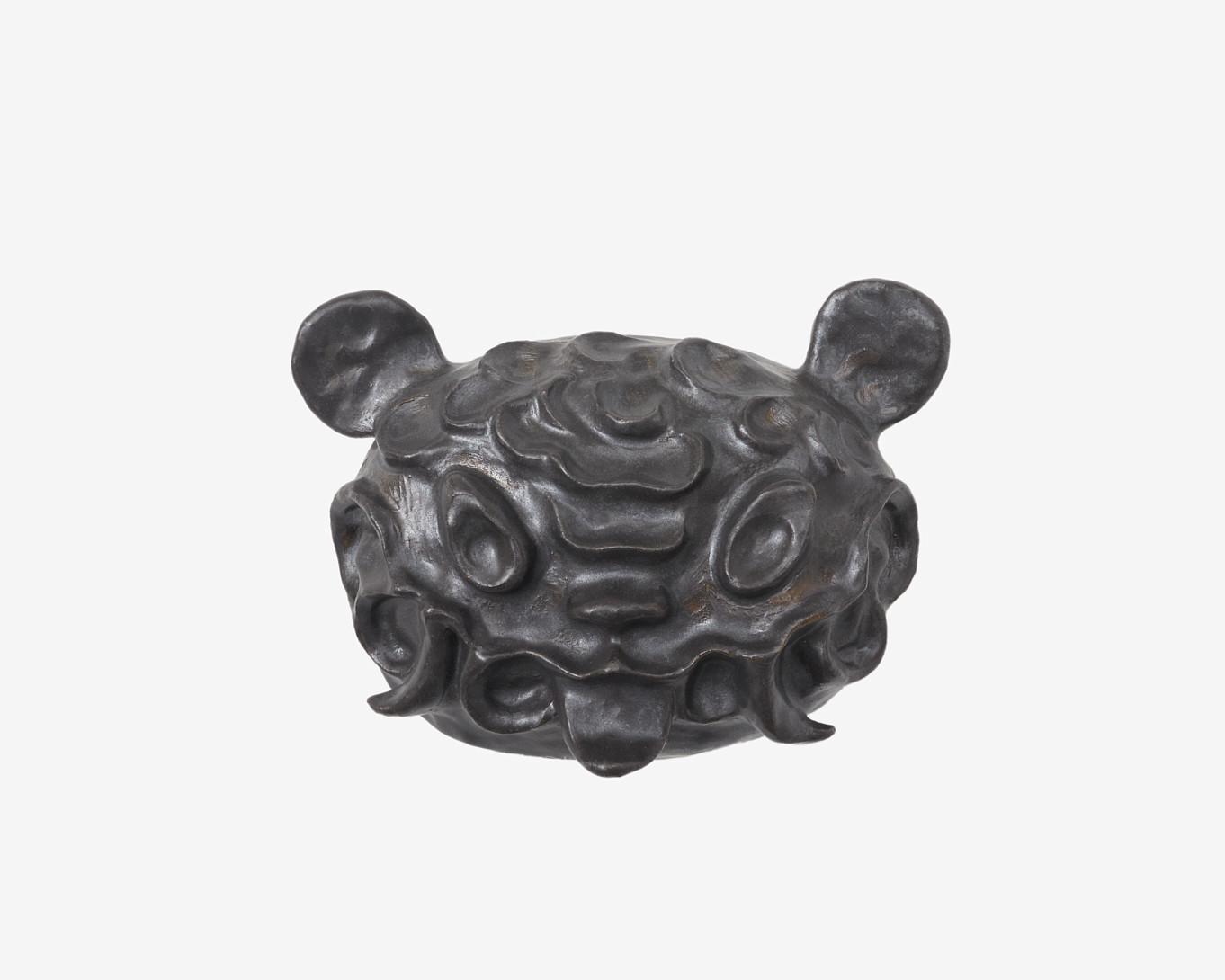

















© Credits photo: Thomas Marroni


















The work of Kazuma Koike does not have a specific meaning encoded in it. It is meant to appear as if it belongs nowhere, creating a floating feeling that is heightened by the gallery’s white walls. For his first solo exhibition in Europe, the artist shows twenty black-glazed ceramic figurines as well as some textured paintings assembled with a color touch to create the illusion of vibration. His mysterious creatures sharing animal and human traits are the result of combining images from various places and periods, an approach influenced by his childhood growing up in three countries: Japan, Spain and Argentina.
Inspired by statues of numerous various gods found in temples and churches, Kazuma Koike’s figures are always associated with some kind of faith but never a specific one. The artist wishes for his work to resonate with a wide range of people, but at the same time he tries to keep his art free of precise definitions. He strives to create artwork that is as unique as possible and has never been seen before. For that, he studies the enigmatic objects that remain in the world such as the dogū ceramic figurines of Jōmon period whose exact meaning stays uncertain or the wooden statuettes of Buddhist monk Enkū created during Edo period.
The artist’s fascination with mysterious old objects dates back to his childhood. Since then, he has enjoyed visiting museums and has been captivated by the old art works, antiques, and dinosaur bones. He liked the idea of a place that displayed artifacts from different cultures under one roof. It comes as no surprise that he refers to his statuettes as the “fictional ancient artifacts”, with no clear context or meaning. This thought is partly inspired by the utopian ideas and studies of Athanasius Kircher, who was one of the last Renaissance polymaths who lived in a world full of mysteries and wonders waiting to be uncovered. In a similar spirit, Koike’s art allows us to study his enigmatic pieces and alter their purpose.
Kazuma Koike wants his sculptures to be perceived as found objects that existed prior to the artist’s creation. Ceramic is a perfect material for that, as the artist cannot fully control the creative process and the end result depends on the kiln. The artist likes to emphasize “the state where different elements coexist in harmony” by using the same black glaze on all of his sculptures, which also creates an ancient relic appearance, similar to the old Japanese tea bowls. In this exhibition, Kazuma Koike invites us to explore his unique and enigmatic artwork with the curiosity and enthusiasm of a Renaissance scholar.